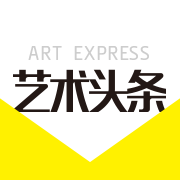
Most comprehensive ZERO exhibition on view at Martin-Gropius-Bau in Berlin
2015-04-16 11:04:48 未知
BERLIN.- The Martin-Gropius-Bau in Berlin is presenting the most comprehensive ZERO exhibition since the beginning of the movement. The exhibition recognizes a German artist group that originated in the early 1950s and quickly became one of the largest international art movements of the post-war era. Some 200 works dating from 1957 to 1967 demonstrate the wide range of media used by the 43 artists of ZERO—including Heinz Mack, Otto Piene, Günther Uecker, Lucio Fontana, Yves Klein, Jean Tinguely, and Jef Verheyen. The exhibited paintings, kinetic art, installations, performances, films, and publications offer visitors a broad spectrum of visual experiences. The exhibition in Berlin includes a number of newly discovered ZERO works not yet shown in public and is accompanied by a comprehensive program of events.
Based on the research project conducted over a number of years by the ZERO foundation in Düsseldorf, the Solomon R. Guggenheim Museum in New York, and the Stedelijk Museum in Amsterdam, three comprehensive exhibitions are being mounted to form the most exhaustive presentations of the ZERO movement since its founding. The opening dates of the exhibitions are: October 10, 2014 at the Guggenheim Museum in New York, March 21, 2015 at the Martin-Gropius-Bau in Berlin, and July 4, 2015 at the Stedelijk Museum in Amsterdam.
International scholars and experts have identified the most significant exhibitions, performances, and publications that shaped the core of the European network of ZERO artists and have compiled photographs, videos, and other documents in a specially developed database, ZEROgraphy. This collected body of knowledge serves as the common basis for all three exhibitions, each of which has a different emphasis.
The Guggenheim Museum New York is presenting the ZERO movement in the context of a transcontinental exchange, illustrated through important historical exhibitions and publications. In Amsterdam the focus is placed on the two historic ZERO exhibitions, which took place in the Stedelijk Museum, Amsterdam in 1962 and 1965. In Berlin, the ZERO foundation is mounting a presentation conceived together with ZERO artists and structured according to core themes, such as time and space, color, vibration, reflection, movement and light. In the tradition of the 1963 exhibition in Galerie Diogenes in Berlin, curated by Heinz Mack, Otto Piene, and Günther Uecker, the exhibition at the Martin-Gropius-Bau also includes works by artists whose involvement in ZERO has been forgotten.
In addition to many highlights not shown in New York, the Berlin exhibition also presents several newly discovered works, including a two-meter high, golden work by Lucio Fontana, which was created in collaboration with the Belgian ZERO artist Jef Verheyen and was previously considered lost. This and other collaborative works produced by Fontana and Verheyen together with the Frankfurt ZERO artist Hermann Goepfert were discovered in the course of preparing the exhibition. These works have been restored and are being shown publicly for the first time.
Presenting dynamo in parallel with the exhibition, the ZERO foundation is hosting a diverse program of events bringing together a variety of disciplines. The unique spirit embodied by ZERO is expressed in a diverse selection of music, dance, and literary events and a workshop for children. On May 1 and 2, 2015 an academic symposium headed by Daniel Birnbaum (Academic Advisory Board, ZERO foundation) and Wulf Herzogenrath (Akademie der Künste, Berlin) will offer an in-depth examination of the influence of ZERO on a younger generation of artists. The newspaper conceived especially for the exhibition draws connections between the historical neo-avant-garde and the present. Written contributions by artists, theorists, architects, and musicians underscore the complexity, lasting influence, and inspirational potential of ZERO from a range of perspectives.
Fifty years after the founding of the ZERO movement, the international acclaim of the three founding fathers Heinz Mack, Otto Piene, and Günther Uecker has grown immensely, especially in recent years. This is reflected in the numerous solo and group exhibitions in which they are currently taking part. Among these, the exhibition in Berlin represents a particular highlight, a presentation that truly illuminates the ZERO movement through new insights and expanded possibilities for experiencing the work of its artists. ZERO – the countdown continues!
(责任编辑:王维)
注:本站上发表的所有内容,均为原作者的观点,不代表雅昌艺术网的立场,也不代表雅昌艺术网的价值判断。

 李铁夫冯钢百领衔 作为群体的早期粤籍留美艺术家
李铁夫冯钢百领衔 作为群体的早期粤籍留美艺术家 翟莫梵:绘画少年的广阔天空
翟莫梵:绘画少年的广阔天空 OCAT上海馆:参与构建上海艺术生态的十年
OCAT上海馆:参与构建上海艺术生态的十年 “纤维”提问2022:存在何“缓”?
“纤维”提问2022:存在何“缓”?
全部评论 (0)